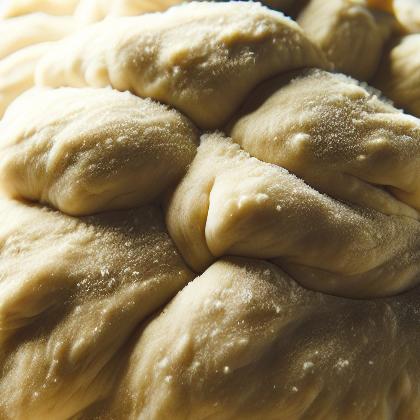Showing results for 'Natural yeast dough'
close
Natural Yeast Dough

Dough (About this sound /doʊ/ (help·info)) is a thick, malleable, sometimes elastic, paste made out of any cereals (grains), leguminous or chestnut crops. Dough is typically made by mixing flour with a small amount of water and/or other liquid, and sometimes includes yeast or other leavening agents as well as other ingredients such as various fats or flavorings.
Natural yeast dough Pairs With:
Food Item
Flavor Affinity Level
Natural yeast dough Properties:
| Food Property | Type | Description |
|---|---|---|
| Flavor Profile | Umami | Natural yeast dough has a savory and rich flavor due to the presence of umami compounds formed during fermentation. |
| Texture | Tenderness | Natural yeast dough is soft and tender, with a smooth texture that is easily formed and shaped. |
| Nutritional Value | Macronutrients | Natural yeast dough is a source of carbohydrates, proteins, and fats, providing energy for the body. |
| Micronutrients | Natural yeast dough contains vitamins and minerals that are important for overall health and metabolism. | |
| Fiber | Natural yeast dough may contain some dietary fiber, depending on the type of flour used in the recipe. | |
| Aroma | Fermentation | Natural yeast dough has a distinctive aroma due to the fermentation process, which releases volatile compounds that contribute to the overall flavor profile. |
| Chemical Composition | Acidity/Alkalinity (pH) | Natural yeast dough has a slightly acidic pH due to the fermentation of sugars by the yeast. |
| Cooking Behavior | Heat Conductivity | Natural yeast dough conducts heat well, resulting in even baking and browning when placed in the oven. |
| Water Retention | Natural yeast dough retains moisture well during baking, resulting in a soft and moist texture. | |
| Oil Absorption | Natural yeast dough may absorb some oil during frying or baking, contributing to its overall flavor and texture. |
Food Pairing App - Version 1.2.0
